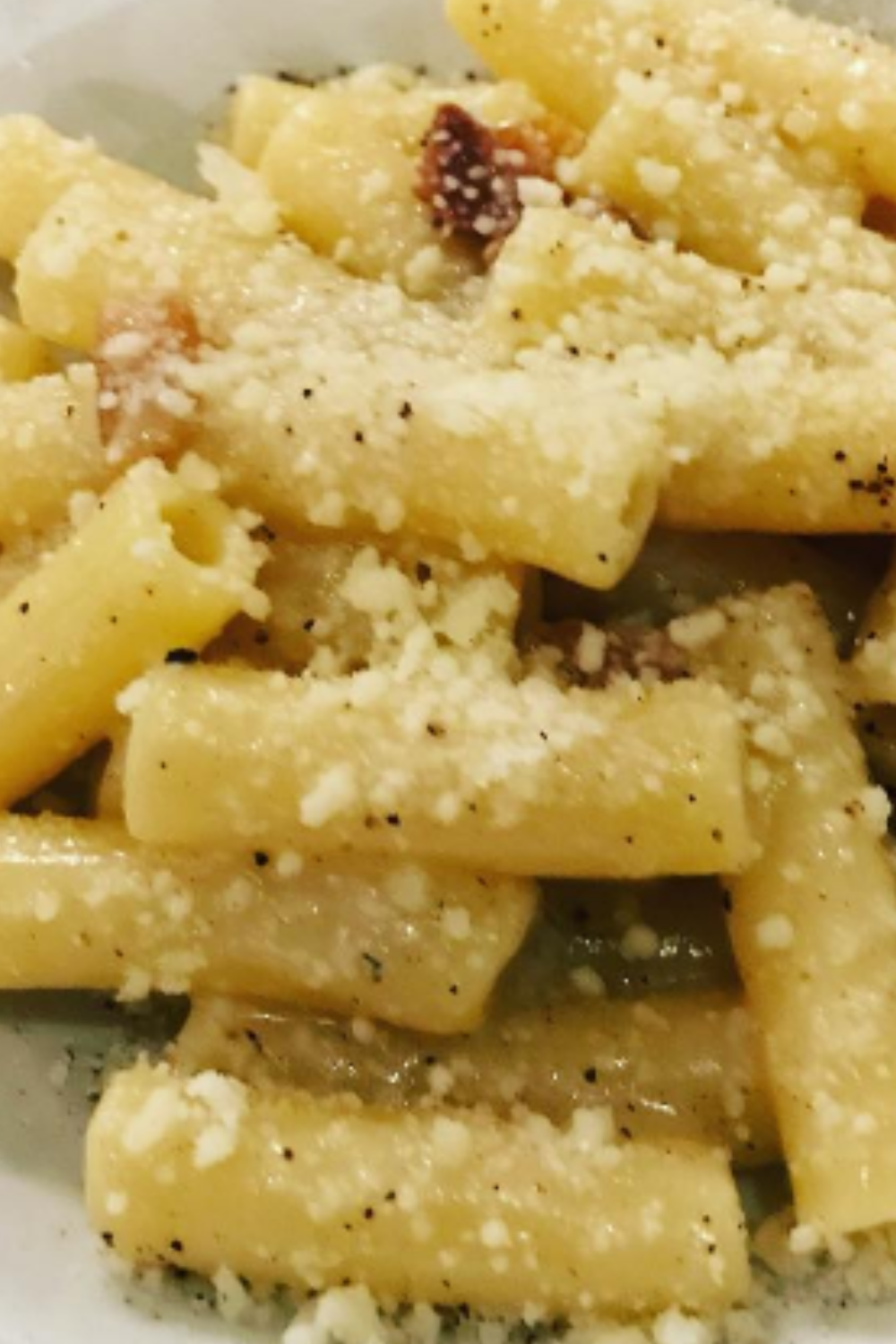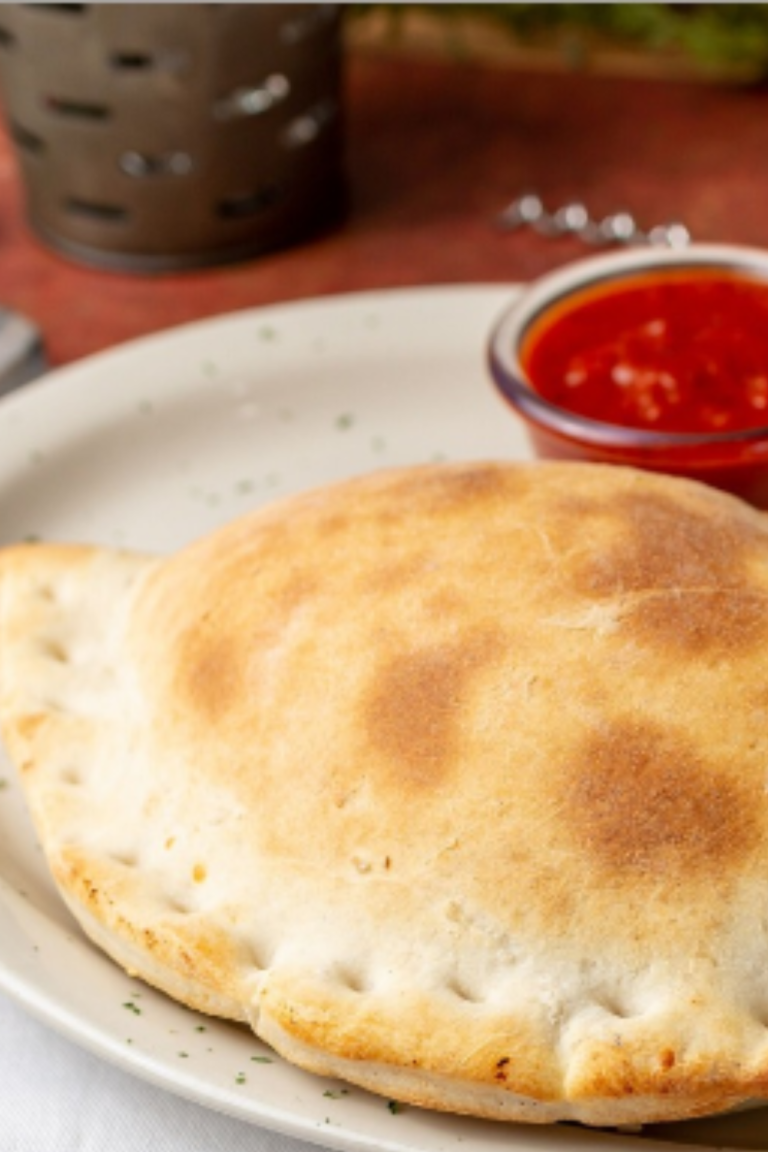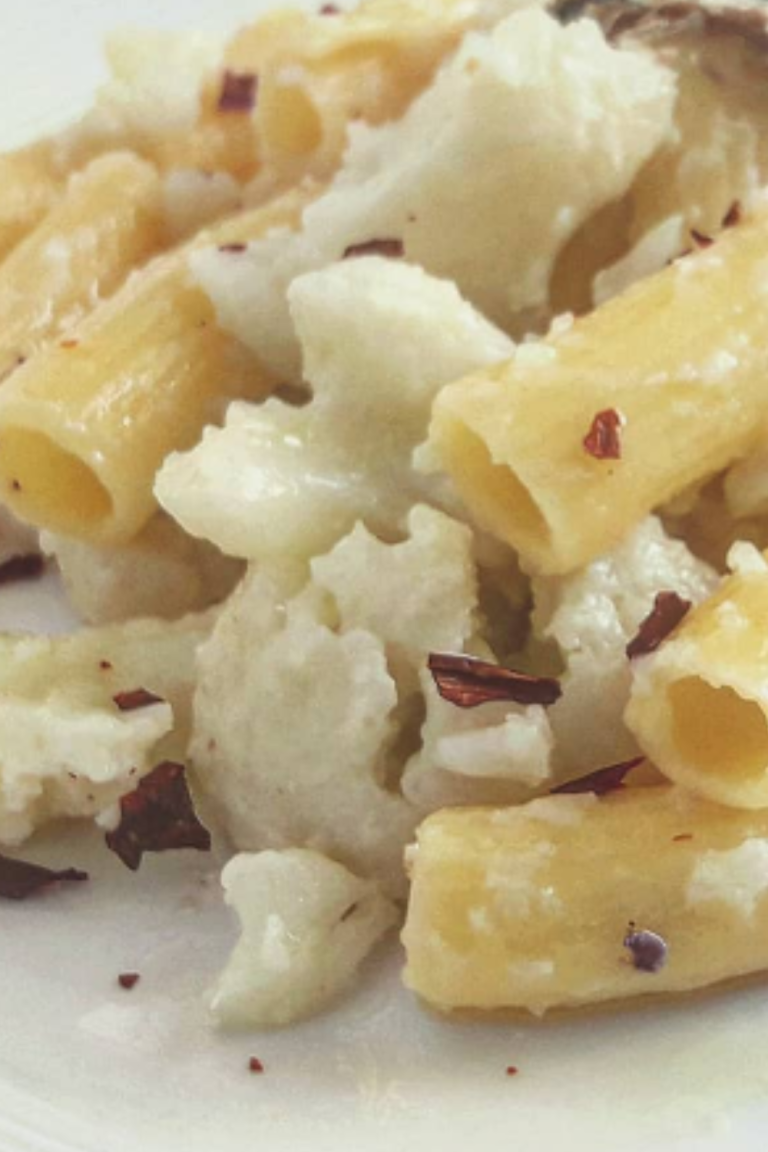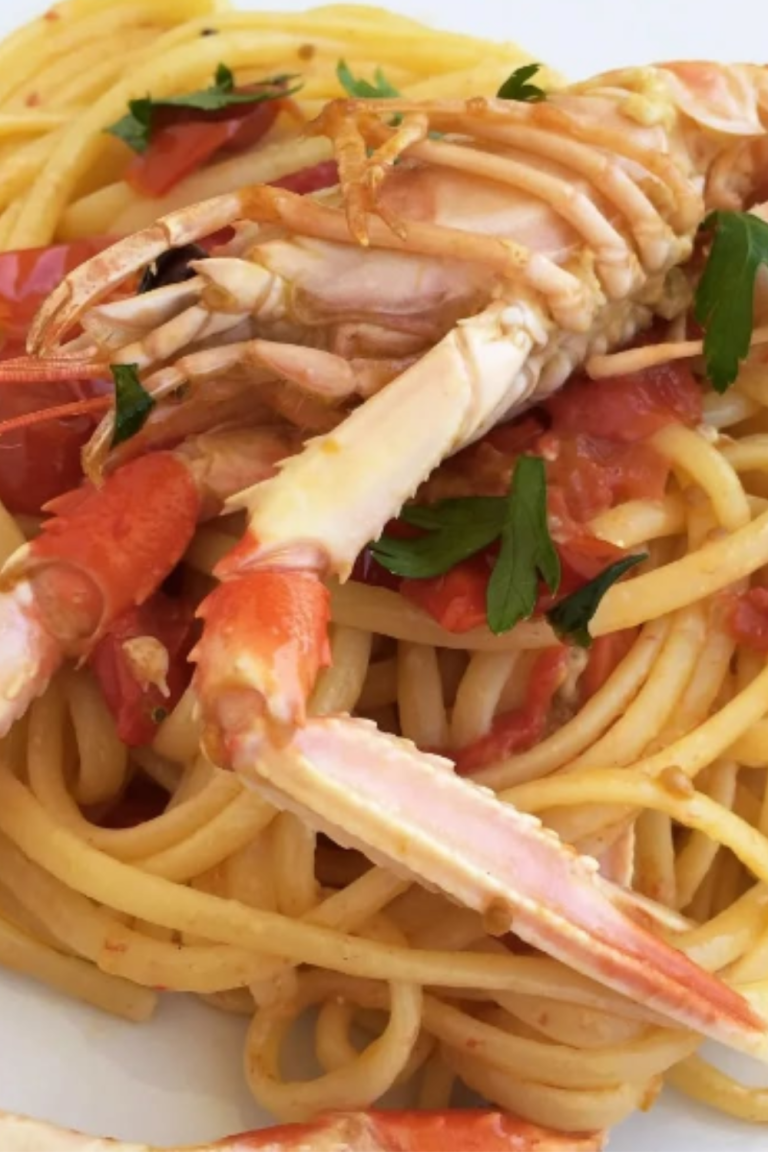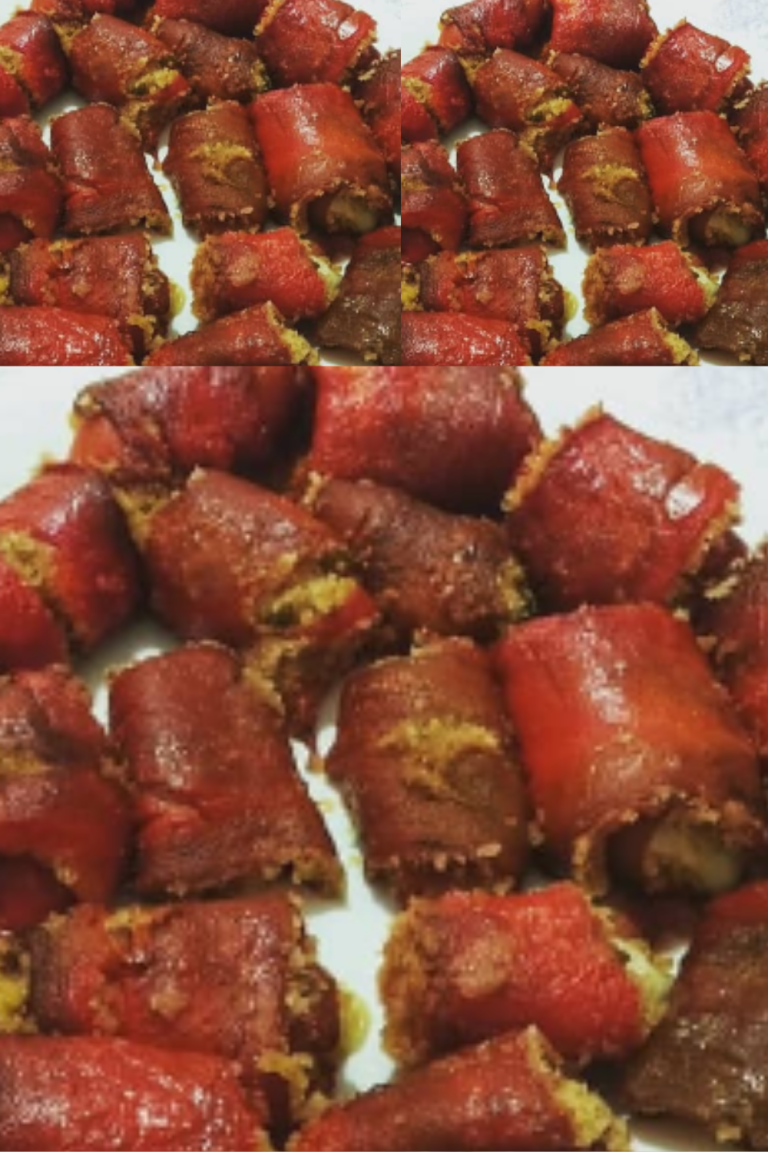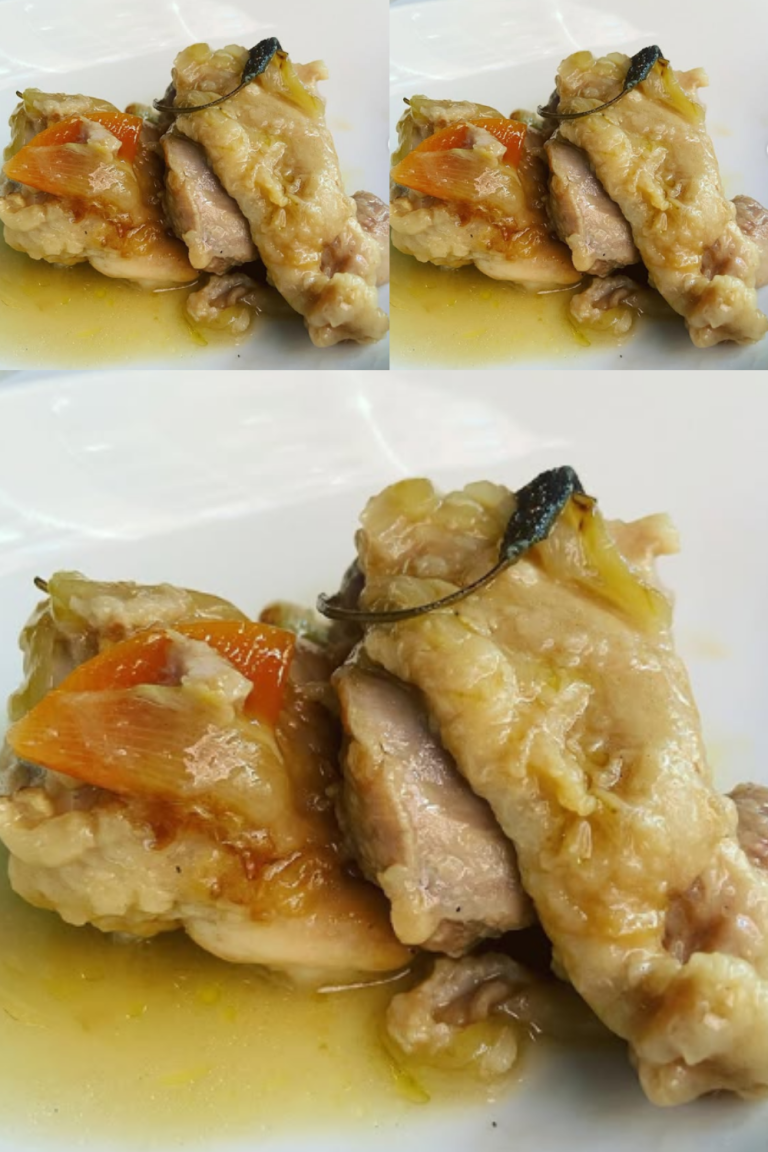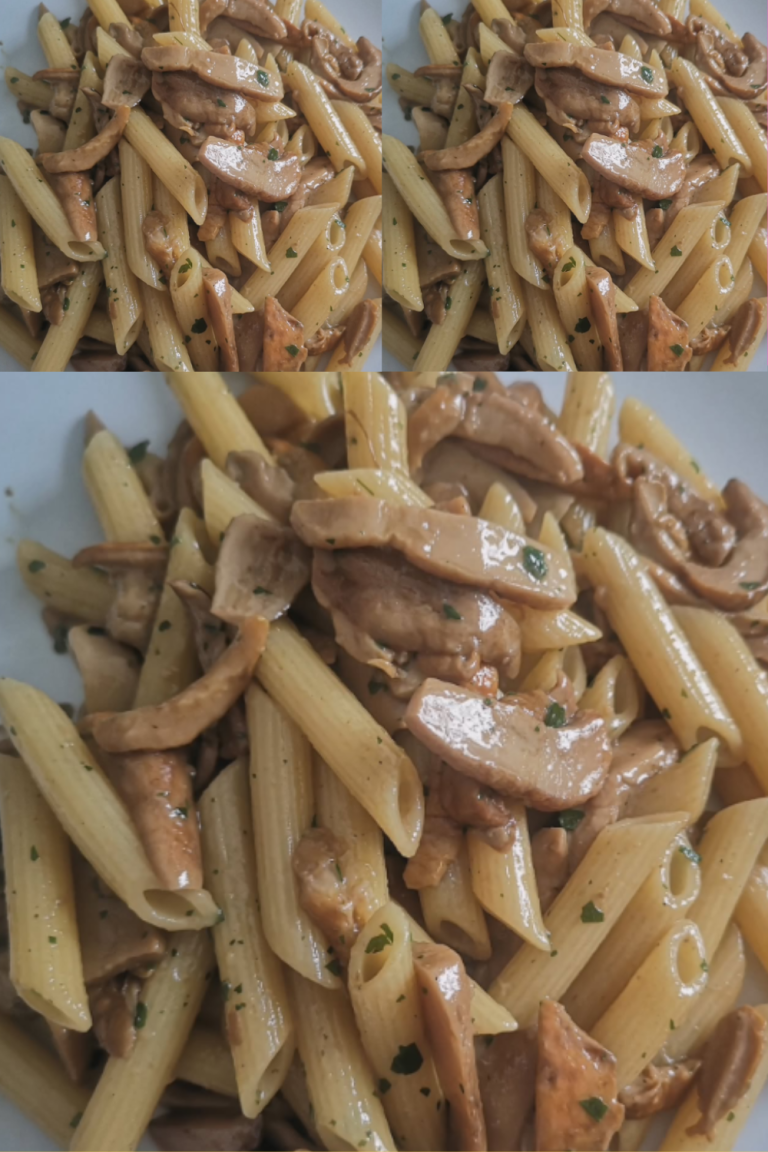Pasta alla Gricia recipe: Simple but profound flavor profile
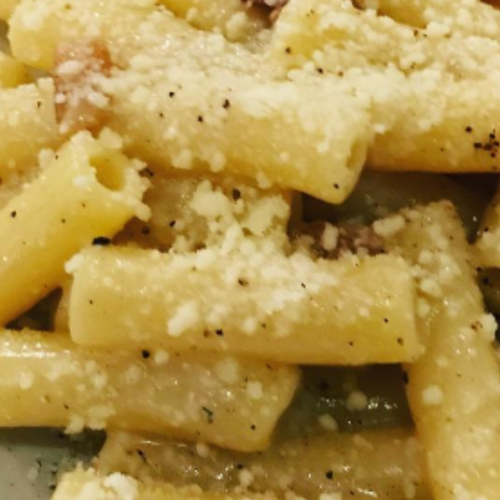
Pasta alla Gricia.
Equipment
- Equipment Needed
- Large pot for boiling pasta
- Large skillet or pan for cooking the guanciale
- Grater for pecorino
- Tongs or pasta spoon for mixing
- Colander for draining pasta
Ingredients
- Ingredients:
- Pasta: 400g 14 oz of spaghetti, rigatoni, or tonnarelli (you can choose based on your preference)
- Guanciale: 150g 5 oz, diced into small cubes or strips
- Pecorino Romano cheese: 100g 3.5 oz, finely grated
- Black pepper: Freshly ground to taste (generous amount)
- Olive oil: 1-2 tbsp optional, as guanciale releases fat
Instructions
- Method:
- Step 1: Boil the Pasta
- Bring a large pot of salted water to a boil (I recommend about 1-2 tablespoons of salt for every liter of water).
- Add your pasta and cook it until al dente, usually 1-2 minutes less than the package instructions. You’ll want to save some pasta water, so keep about 1 cup aside before draining the pasta.
- Step 2: Cook the Guanciale
- While the pasta is cooking, heat a large skillet over medium heat.
- Add the diced guanciale and cook for 5-7 minutes, stirring occasionally. The guanciale will release its fat and turn golden and crispy. Don’t rush this step it’s essential for developing flavor.
- Once the guanciale is crispy, remove the pan from the heat and set aside. You can keep the rendered fat in the pan as it will help season the pasta.
- Step 3: Combine the Pasta and Guanciale
- When the pasta is done, use tongs or a slotted spoon to transfer it directly into the pan with the guanciale. If the pan isn’t hot, warm it over low heat to ensure the pasta absorbs the flavors from the guanciale fat.
- Add a little bit of the reserved pasta water to the pan, just enough to create a silky sauce that coats the pasta (around 1/4 cup).
- Toss the pasta well with the guanciale and pasta water, allowing it to emulsify and create a creamy texture. If the pasta seems too dry, add more pasta water a little at a time.
- Step 4: Add the Pecorino and Pepper
- Sprinkle in the freshly grated Pecorino Romano and black pepper to taste. Toss everything together until the cheese melts and creates a smooth, creamy coating around the pasta.
- Taste and adjust the seasoning with more pepper if needed. The beauty of this dish is in the balance of the sharpness of the Pecorino and the smokiness of the guanciale, so don't be afraid to be generous with the pepper.
- Step 5: Serve
- Serve immediately, garnished with a little extra Pecorino and freshly ground black pepper.
- Variations:
- Pasta Shape: While spaghetti is the most common choice, feel free to use other pasta like rigatoni or tonnarelli, which work well with this dish's rich sauce.
- Cheese Substitution: If you can't find Pecorino Romano, you can substitute with Parmigiano Reggiano, though the flavor will be a little less sharp.
- Dietary Considerations: If you're vegetarian, try substituting the guanciale with a plant-based bacon alternative (though the flavor won’t be the same). For gluten-free diets, use gluten-free pasta.
Pasta alla Gricia is one of the classic Roman pasta dishes that’s rich in flavor and incredibly simple to prepare. It’s often referred to as the “mother” of all Roman pasta dishes, from which other dishes like carbonara and amatriciana evolved. What I love about Pasta alla Gricia is how something so minimalistic can taste so indulgent. You don’t need a lot of ingredients to make this just pasta, guanciale, pecorino Romano, and black pepper. From my own personal experience, or based on my overall experience, I find this dish not only comforting but also a great introduction to Roman pasta cuisine.
Let me show you how I make Pasta alla Gricia.
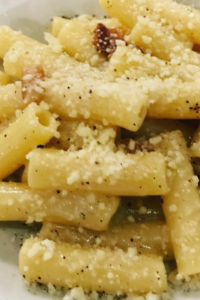
Notes on What to Expect:
Pasta alla Gricia has a simple but profound flavor profile. The saltiness and richness of the guanciale, combined with the sharpness of the Pecorino, creates a comforting and satisfying dish. The key to a great Pasta alla Gricia lies in balancing the rendered fat from the guanciale with the pasta water, so the sauce coats each strand perfectly without becoming too greasy or dry.
Ingredients:
- Pasta: 400g (14 oz) of spaghetti, rigatoni, or tonnarelli (you can choose based on your preference)
- Guanciale: 150g (5 oz), diced into small cubes or strips
- Pecorino Romano cheese: 100g (3.5 oz), finely grated
- Black pepper: Freshly ground, to taste (generous amount)
- Olive oil: 1-2 tbsp (optional, as guanciale releases fat)
- Go here to buy the must-have equipment and ingredients for creating a Savory #Pasta alla Gricia here.
Prep Time:
- 15 minutes
Cook Time:
- 15 minutes
Total Time:
- 30 minutes
Ease of Cooking:
- Easy to moderate (it’s beginner-friendly but requires attention to detail for the perfect balance of flavors)
Servings:
- 4 servings
Calories:
- Approx. 600-700 calories per serving (depending on pasta type and portion size)
Cost of Ingredients:
- Moderate (guanciale can be a little pricey, but it’s an essential ingredient)
Cuisine:
- Italian (Roman)
Course:
- Main course
Equipment Needed:
- Large pot for boiling pasta
- Large skillet or pan for cooking the guanciale
- Grater for pecorino
- Tongs or pasta spoon for mixing
- Colander for draining pasta
- Go here to buy the must-have equipment and ingredients for creating a Savory #Pasta alla Gricia here.
Method:
Step 1: Boil the Pasta
- Bring a large pot of salted water to a boil (I recommend about 1-2 tablespoons of salt for every liter of water).
- Add your pasta and cook it until al dente, usually 1-2 minutes less than the package instructions. You’ll want to save some pasta water, so keep about 1 cup aside before draining the pasta.
Step 2: Cook the Guanciale
- While the pasta is cooking, heat a large skillet over medium heat.
- Add the diced guanciale and cook for 5-7 minutes, stirring occasionally. The guanciale will release its fat and turn golden and crispy. Don’t rush this step it’s essential for developing flavor.
- Once the guanciale is crispy, remove the pan from the heat and set aside. You can keep the rendered fat in the pan as it will help season the pasta.
Step 3: Combine the Pasta and Guanciale
- When the pasta is done, use tongs or a slotted spoon to transfer it directly into the pan with the guanciale. If the pan isn’t hot, warm it over low heat to ensure the pasta absorbs the flavors from the guanciale fat.
- Add a little bit of the reserved pasta water to the pan, just enough to create a silky sauce that coats the pasta (around 1/4 cup).
- Toss the pasta well with the guanciale and pasta water, allowing it to emulsify and create a creamy texture. If the pasta seems too dry, add more pasta water a little at a time.
Step 4: Add the Pecorino and Pepper
- Sprinkle in the freshly grated Pecorino Romano and black pepper to taste. Toss everything together until the cheese melts and creates a smooth, creamy coating around the pasta.
- Taste and adjust the seasoning with more pepper if needed. The beauty of this dish is in the balance of the sharpness of the Pecorino and the smokiness of the guanciale, so don’t be afraid to be generous with the pepper.
Step 5: Serve
- Serve immediately, garnished with a little extra Pecorino and freshly ground black pepper.
Variations:
- Pasta Shape: While spaghetti is the most common choice, feel free to use other pasta like rigatoni or tonnarelli, which work well with this dish’s rich sauce.
- Cheese Substitution: If you can’t find Pecorino Romano, you can substitute with Parmigiano Reggiano, though the flavor will be a little less sharp.
- Dietary Considerations: If you’re vegetarian, try substituting the guanciale with a plant-based bacon alternative (though the flavor won’t be the same). For gluten-free diets, use gluten-free pasta.
- Go here to buy the must-have equipment and ingredients for creating a Savory #Pasta alla Gricia here.
Tips:
- Pasta Water: The key to a creamy sauce is the pasta water. Make sure to reserve enough water before draining and use it gradually while combining the pasta with the guanciale.
- Guanciale Substitution: If you can’t find guanciale, pancetta is a good substitute, though it lacks the same depth of flavor.
- Heat Management: Don’t overheat the pecorino after adding it, or it can turn grainy. Add it off the heat for a creamy texture.
Nutritional Information Per Serving:
- Calories: ~600-700 kcal
- Carbs: 70g
- Protein: 25g
- Fat: 30g
- Fiber: 3g
I hope this guide has made making Pasta alla Gricia seem a little less daunting, or have you tried it before? Please, be honest, and let me know in the comment below. I like to hear feedback from a real person like you, so please, leave your honest comment!

Hello all,
Zio Leo here!
Cooking and sharing great food brings people together in the most authentic way, in my own personal experience, and with a lifelong passion for Italian cuisine, I’m here to share tips, recipes, and stories that celebrate the rich flavors of Italy. From classic dishes to modern twists, have my guides inspired you to bring a little bit of Italy into your kitchen? Please, be honest with me here. Leave your comments down below. I’d love to hear from real people like you. Read more about me here! =>>
